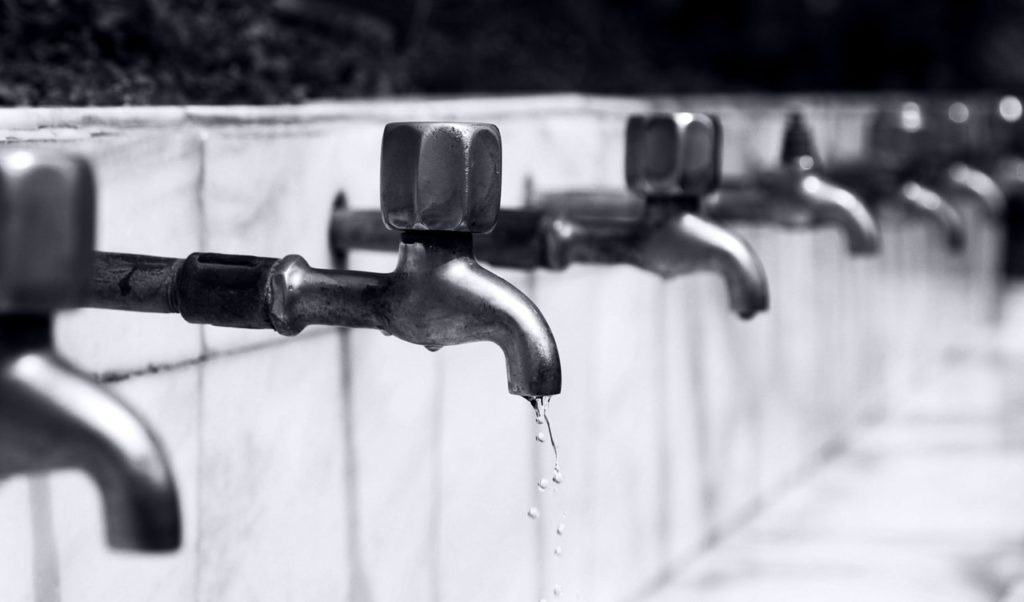
Water conservation is an important way to lower the demand for water, as well the added benefit of saving on your water bill. Water conservation is easier than you may think. There are a few simple ways that will rev up your water conservation without making too many changes in your normal daily routine. Take a minute to follow these steps and you’ll be doing your part to ensure that clean water will be available to future generations.
Watering the lawn
Curb appeal is definitely important, but here’s something most homeowners aren’t aware of. Most individuals water their lawn up to 30% more than is actually necessary to achieve a healthy, green lawn. How do you determine how much water your lawn needs? I’m glad you asked. First, step onto your lawn to see just how moist the soil is. If the ground seems wet, or the grass springs back after being stepped on, then it is getting more than enough water. If you have an automatic, timed watering system, reset the timers so that you are watering few days, instead of daily. Here’s another tip. Landscape your yard with plants that are native to your area. You’ll be surprised at how much less work and water they will require for survival.
Leaky faucets and pipes
That annoying little drip can be a lot more serious than you may think. Even a slow leak can cause an excess of up to 600 gallons of water to be. If you find a leak on the connection of two pipes, try replacing the washer for a quick fix. Be sure to fix any leaks immediately. Checking pipes and plumbing on a regular basis only takes a few minutes and can play a big part in water conservation. Another trick for checking leaks is to read your outdoor meter, then turn off all water in your home. Recheck the meter after a few hours. If the meter has changed, you have a leak somewhere.
Washing the car
When using water outside, remember to turn the hose on only when you need it. If you are washing your car, fill the bucket up only half way, instead of to the top. Only turn the hose on when you need to rinse the car off, instead of letting it run the entire time. If you are watering plants, try filling a watering can instead of dragging a hose from planter to planter. When finished, turn the water off at the house. Those nifty gun type nozzles attached to your hose aren’t leak proof and can drip a large amount of water over time.
Take Shorter Showers
We all love our hot morning shower, but conservation can happen there as well. Invest in water saving shower heads. Your shower will still flow at a comfortable level, but you’ll be reducing the amount of water you use by almost half! Also, don’t stand under the water for so long and cut your shower time in half. Another quick way to conserve water in the bathroom is to only turn the faucet on when rinsing your toothbrush. Don’t keep the water running while brushing your teeth.
Washing Clothes
Only run the washing machine when you have a full load. Running the washing machine for a half load or just a few pieces of clothing can waste a lot of water. At the very least, set your washer to “small load” if you must wash only a few items.
Waiting for the hot water
You may not have thought of this one. Don’t waste the water out of your faucet while you wait for the hot water to start flowing. Instead, try capturing the water in a watering can to use on your indoor plants, or into a pot for the noodles, you’ll be cooking later in the day.
Washing the dishes
When washing your dishes by hand, fill each side of a two-sided sink. Use one side for soapy water and the other for clean water. This is a much better choice than to just let the water using running water to rinse each of your dishes.
Bathroom tips
Toilets aren’t the most fun to talk about, but a low-flow toilet can greatly reduce the amount of water used with every flush. If you don’t have a low flow toilet installed, check for leaks. You can do this by adding food coloring to the tank. If there is a leak anywhere on the toilet, the color will appear with in 30 minutes. Remember to flush after 30 minutes as the food coloring can stain the toilet.
Kitchen sink disposal
Try and use the kitchen sink disposal less, and think about creating a mulch pile. The kitchen sink disposal uses a ton of water every time it is run, so use the garbage can more, and try creating a mulch pile for your plants.
In the kitchen
Try keeping cool drinking water in the fridge instead of running the faucet and waiting for the cool water to run. Don’t let the faucet run to rinse vegetables, instead use a pan or bowl of water to do so. Also, try and fill a bowl of water if defrosting meat, or plan ahead and set it out so you don’t have to run water over frozen meat to help the defrosting process.
